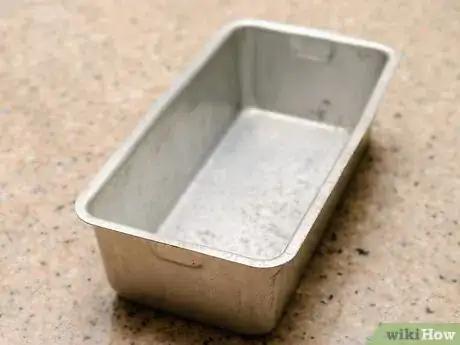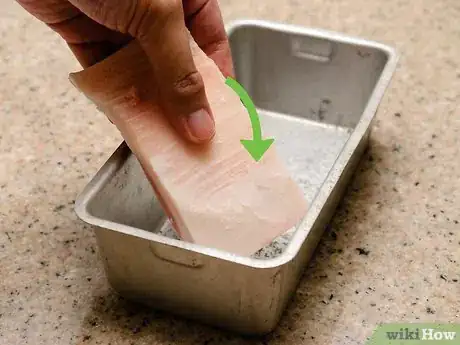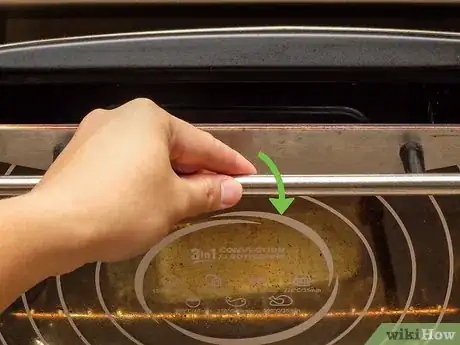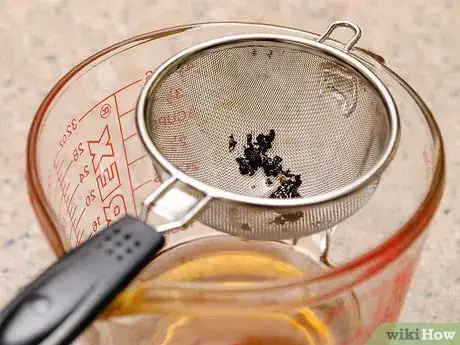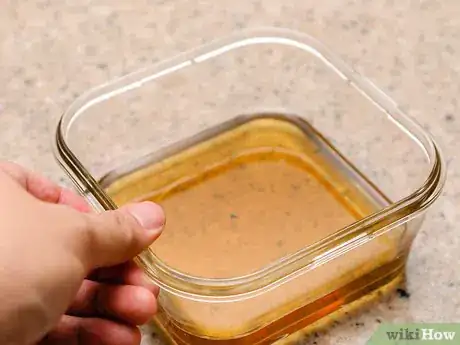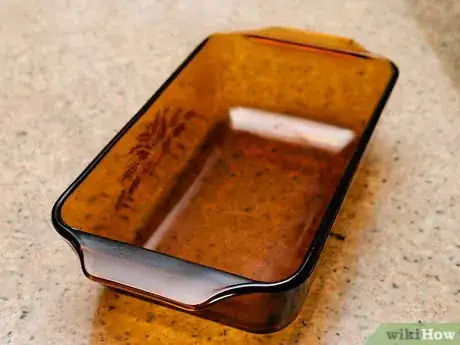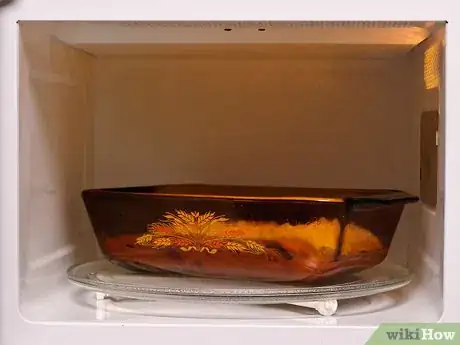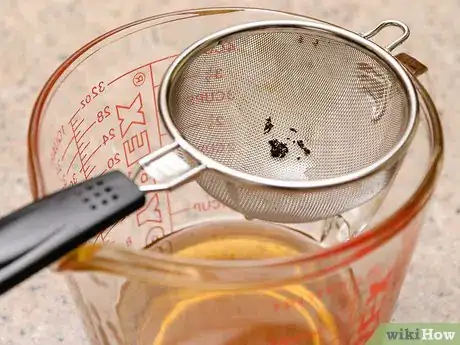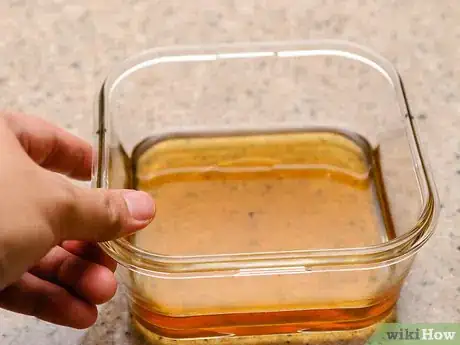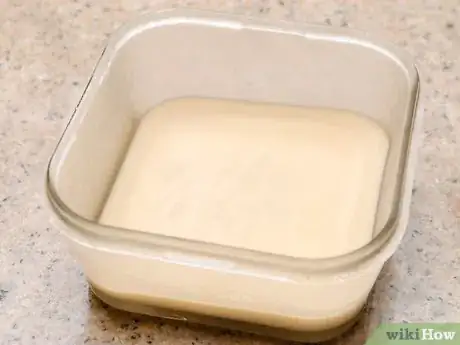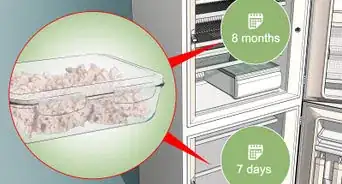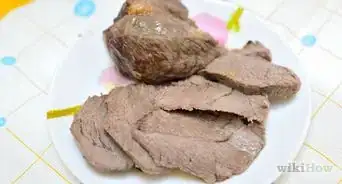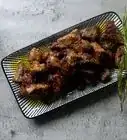X
wikiHow is a “wiki,” similar to Wikipedia, which means that many of our articles are co-written by multiple authors. To create this article, volunteer authors worked to edit and improve it over time.
This article has been viewed 20,392 times.
Learn more...
Rendering suet (also called "tallow") which is beef fat, is the process of heating it to the melting point.
Steps
Method 1
Method 1 of 2:
Traditional Oven
-
1Use an oven-safe pan or dish large enough to hold the amount of suet you plan to render. Use a pan that has high enough sides to hold all the suet when it becomes liquid. A wider pan, such as a 9" X 13" cake pan, with 2 inch (5.1 cm) sides will work well for 6 to 8 cups of suet.
-
2Put the suet in the oven-safe pan. Place the pan in the oven at about 200ºF/93ºC. Rendering is a slow process of melting the fat. Do not boil the rendered fat, and be aware that rendered fat (as oil) will be flammable, so use appropriate caution if rendering suet in a gas oven or near any open flame.Advertisement
-
3Check the suet every hour to make sure it is melting––but not boiling. Adjust your oven temperature up or down by 25 degrees, if needed. The rendered hot oil will start to clarify. If you have used raw, untrimmed suet, you will see particles that will settle at the bottom of the pan, and some that will float to the top.
-
4Filter the suet. When the suet is fully melted, (the timing will vary depending upon the quantity of suet rendered), filter it by pouring it through a fine steel mesh, or a funnel with a coffee filter or paper towel lining it. Caution! The oil is hot and will not pour through a filter quickly, so take your time to avoid spilling.
-
5Allow to set. After filtering, pour the hot, melted, filtered suet into a container. (If using plastic, make sure it will withstand heat.) As it cools, the suet will solidify again.
Advertisement
Method 2
Method 2 of 2:
Microwave Oven (Faster)
-
1Use a tempered glass or other microwave safe container. For example, a clear Pyrex 4 cup measuring cup with handle. Put the suet in, filling to within an inch of the top of the container. Do not put in more than the container will hold.
-
2Put the microwave safe container and suet into the microwave. Heat on high for 1 minute. Continue to microwave at 1 minute intervals, checking each time to make sure that the suet is melting––but not boiling. The rendered hot oil will start to clarify. If you have used raw, untrimmed suet, you will see particles that will settle at the bottom of the container, and some that will float to the top.
-
3Filter the suet. When the suet is fully melted, (the timing will vary depending upon the quantity of suet rendered), filter it by pouring it through a fine steel mesh, or a funnel with a coffee filter or paper towel lining it. Caution! The oil is hot and will not pour through a filter quickly, so take your time to avoid spilling.
-
4Allow to set. After filtering, pour the hot, melted, filtered suet into a container. (If using plastic, make sure it will withstand heat.) As it cools, the suet will solidify again.
-
5Finished.
Advertisement
Community Q&A
-
QuestionCan I feed rendered beef fat to birds?
 Community AnswerYes. Rendered beef fat is the main ingredient in suet bird feeders. To make a bird feeder, you could mix some birdseed into the cooled rendered suet, then roll the mixture into balls.
Community AnswerYes. Rendered beef fat is the main ingredient in suet bird feeders. To make a bird feeder, you could mix some birdseed into the cooled rendered suet, then roll the mixture into balls.
Advertisement
Warnings
- Caution! Rendered suet is simply hot oil. Use appropriate care, as it is flammable and can also cause burns if spilled.⧼thumbs_response⧽
Advertisement
Things You'll Need
- Suitable heatproof container (cake pan for oven or tempered glass for microwave oven)
- Filter (fine steel mesh, coffee filter, funnel, etc.
- Suitable container for holding suet as it sets (do not use anything that might melt when hot liquid is poured into it)
About This Article
Advertisement
